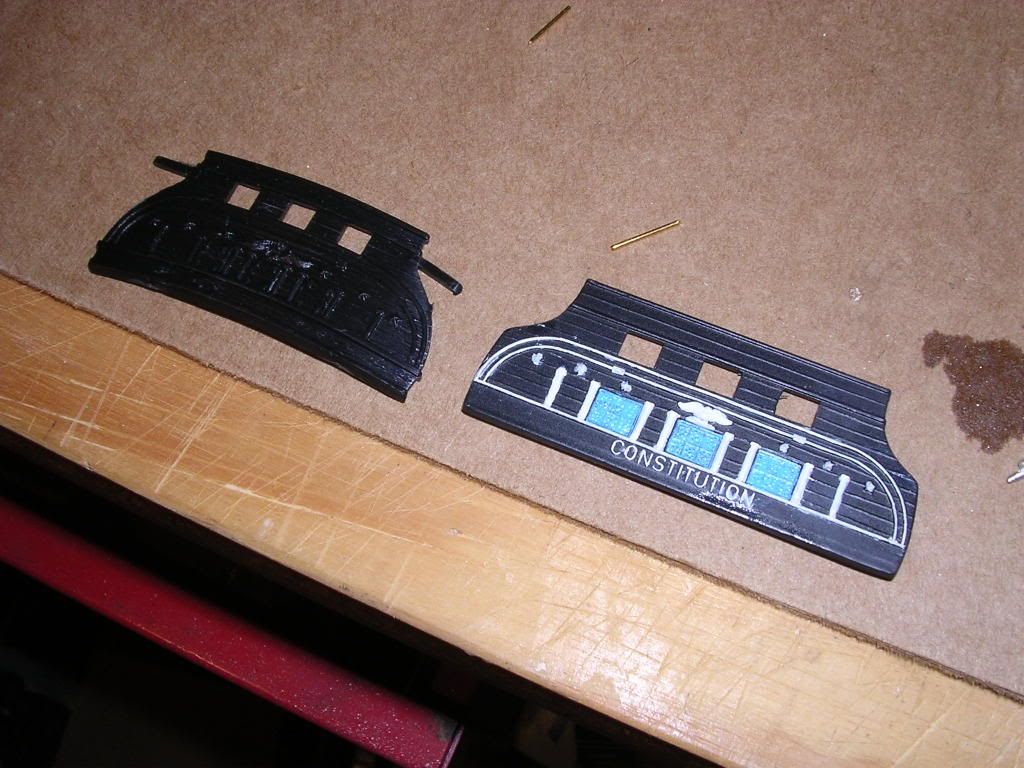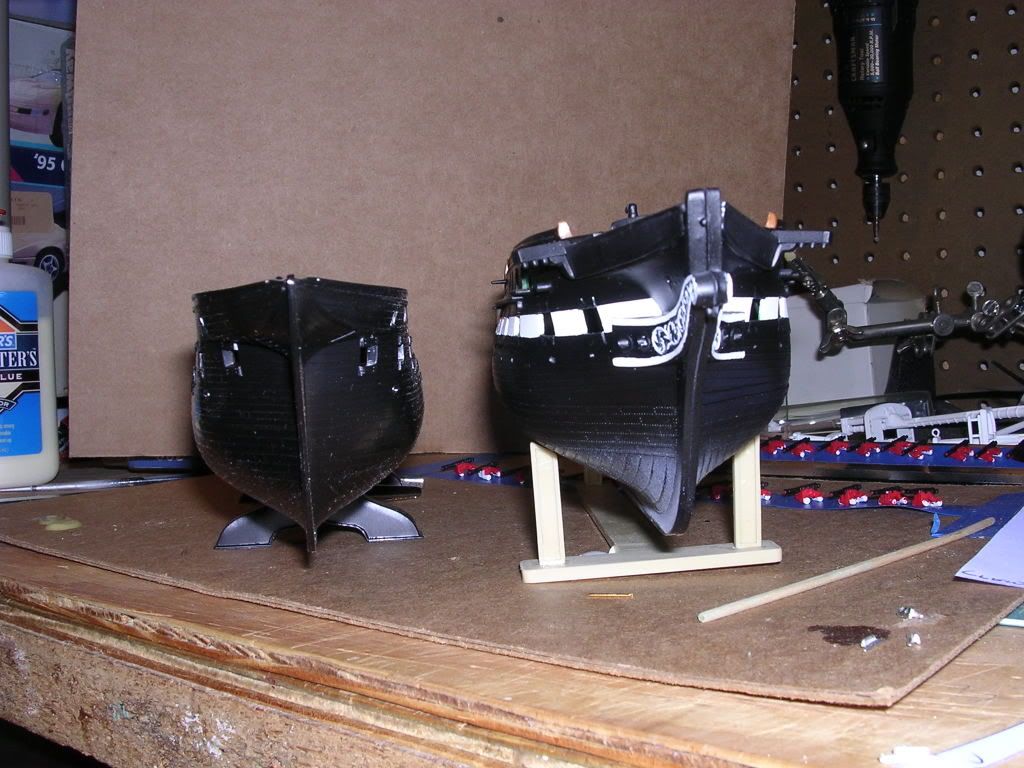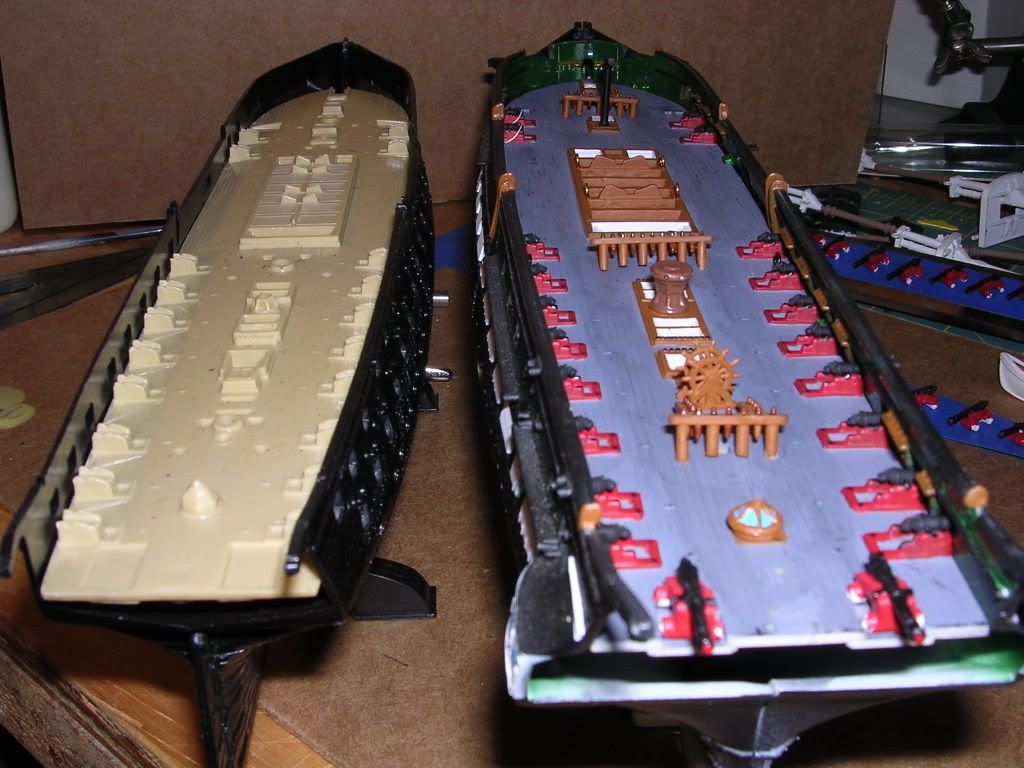We had a good discussion of the old Revell 1/196 Constitution kit in the Forum a couple of months ago. I’ve moved it to the first page; it should appear just below this one. If rayers’s United States kit is indeed a reissue of that one, the comments in that thread - regarding the big, solid hatch on the spar deck, for instance - presumably are applicable.
I’m not sure this is the kit rayers has, though. I just checked the Revell Germany website. There’s a “1/150” U.S.S. United States on it all right - and it’s described as having a one-piece hull. There’s no photograph of the kit - just a reproduction of the box art. And the dimensions (assuming my conversion from the metric system is reasonably accurate) don’t check out for 1/150. They’re way too small.
I wonder if this kit is the old Constitution that Monogram issued back in the late seventies. That’s the only one I can recall that had a one-piece hull. It was promoted as being the ultimate in simplicity, at a time when the plastic ship model industry was just about dead. I seem to recall that the yards were molded integrally with the masts, as well. Monogram did a Cutty Sark in a similarly-sized box at the same time, with similar simplifications.
Rayers - does yours have a one-piece hull?
Regarding the United States herself - my impression is that she had the “round house” (i.e., raised quarterdeck) from the beginning, because she was intended to serve as the flagship of the embryonic U.S. Navy and to carry a supernumerary commodore in addition to the ship’s captain. I may be mistaken, but I believe that’s what Howard I. Chapelle, in his History of the American Sailing Navy, says. In his plans for the class Chapelle added the raised quarterdeck in dotted lines, with a note that the feature was “reconstructed” (i.e., it didn’t appear on the original drawing he was tracing). Chapelle’s book is pretty old now (1949), and I normally like to check his statements before asserting that they’re absolutely correct. But I’m not aware of any other researcher’s having taken much interest in the United States. That’s a shame, really. She was an important ship, and had an interesting career.
If Chapelle and I are right, a model of the United States without the raised quarterdeck wouldn’t be accurate. There seem to be a couple of options. One -build the raised quarterdeck. (Evergreen scribed styrene sheet would be a good material for the deck planking. The trickiest part would be figuring out what to do about the transom and its associated carvings.) Two - scrape the name off the transom and call the model either Constitution or President. If the painting on the Revell Germany website is to be believed, the figurehead in the kit is a simple generic billet head. The Constitution and President had figureheads of that style during the War of 1812.
Regarding the “shrouds and ratlines” - “nasty” is a good word for what’s in the kit. My good friend Jake and I seem to have a cordial disagreement about the best way to solve the problem; read what both of us have to say about it and take your pick (or ignore both of us). In my opinion Heller-type jigs are a waste of time and effort - and almost everybody I’ve heard from who’s bought a “loom-a-line” has thrown it away. In that earlier post about the old Revell Constitution kit I described two ways to make ratlines out of thread - both of which methods will look far, far better than any system that involves gluing the threads across the shrouds. On this particular kit I’d probably use the “shove-the-ratline-through-the-shroud-with-a-needle” method.
On 1/150 (or 1/196) scale rigging ratlines is tricky, no matter how you do it. They should, in theory, be about 1/16" apart. If you space them wider than that - say, anything less than 1/8" - most people probably won’t notice. But, as another Forum participant commented once, the best solution on such a small scale may be simply to leave the ratlines off. If the shrouds are rigged nicely the model won’t look bad. Ludicrously out-of-scale ratlines will do more harm than good.
In that earlier thread you’ll also find some comments about rigging line. The bottom line is - the more variety the better. A ship model rigged with four or five different diameters of line will look far more realistic than one rigged with two. Two golden rules about rigging: If in doubt about color, err on the dark side. If in doubt about size, err on the small side.
Hope this helps a little. Good luck.





